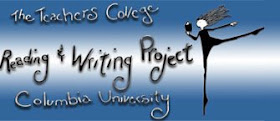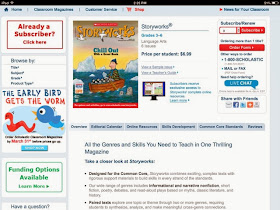- Eaker & Keating
About Me
▼
Tuesday, July 1, 2014
Welcome!
Friday, May 23, 2014
Goodbye....and WELCOME
There will be no new posts on this site going forward, everything that is here will stay here though.
Please come visit me at my new site...
Monday, May 5, 2014
Content Area Centers....with embedded ELA practice!
While at Teachers College back in February, I learned about content area centers for middle schoolers and fell in love with the idea. For those of you who have been teaching primary grades, centers are not new for you. But when my learning happened the examples I was provided all had to do with middle school and to be honest, the task cards were a bit overwhelming, so I starting thinking through how I would tweak them for elementary, and here is the resulting post :)
What if instead of cracking open social studies textbooks or jumping into science experiments from our FOSS or EIE kits, we had a day or two set aside for centers? K-8 teachers, I want to challenge you to think about some of these compelling reasons to engage in this type of teaching for the purpose of increasing your student's learning.
What if instead of cracking open social studies textbooks or jumping into science experiments from our FOSS or EIE kits, we had a day or two set aside for centers? K-8 teachers, I want to challenge you to think about some of these compelling reasons to engage in this type of teaching for the purpose of increasing your student's learning.
Centers are: An opportunity for students to engage with content in a variety of the ways, many "access points", Requires deep thinking about content, rather than "sit and get, Students learn from conversation with one another, defending opinions, justifying thinking with text evidence, Allows for differentiation in task, support, and thinking, Great chance to generate and answer "big questions", Lends to thoughtful CCSS connections, Builds independence and ownership of learning, Here are some ideas for centers that could become part of your instruction regardless of the center;
Of course students need to know what your expectations are for the centers, and that does take time. Once students know what the expectations are for the photograph center however it doesn't matter if the photos are of the civil rights movement, science content, or even a math diagram, they know what to do.
Sunday, February 23, 2014
Library of Congress Resources
Check out this page of the Library of Congress that is just for teachers. Resources such as articles and primary source documents can be accessed by grade level and standard. Check it out as a way of supplementing your current resources and expanding your student's experience with history!
Friday, February 21, 2014
Close Reading in Read Aloud
My new "friend" Kathleen Tolan works on close reading and accountable talk with intermediate students. Take a look and be inspired!
Learning Targets
Some Visuals to Support our Understanding....
The following figures are from Connie M. Boss and Susan Brookhart's book Learning Targets
Posting Learning Targets
If you can, try to make some permanent space for your learning targets to be posted in your classroom. This will help your students become familiar with where to check in for self-reflection. It can also be a source of anticipation as students see what they will be focusing on later in the day. Reinforcing the language of your targets by posting them is a small, yet impactful choice to make.
Mini Lecture
The word lecture carries with it a boat load of connotations for me, and probably for you as well. First thing that comes to mind is being in trouble. Don't know if you can believe it, but I got myself in trouble often as a young one. Pushing limits, testing my parents, bossing the world around, saying potty words...You name it, i tried it. As a result, I regularly landed myself in the blue chair in the living room for a time out which was usual bookended with a well deserved lectures about my choices.
Additionally I think of my high school history teacher. Lecture was his style, and although I disliked the format of the class at times, I did learn quite a bit about how to organize, retain and use information. Both memories for me are bittersweet because I tend to learn better by talking than listening. The truth is though, there are times when we just need to be told something. Life isn't always a dialogue, sometime it requires a monologue.
This week as I learned about the instructional strategy called "mini lecture" I could imagine the times when it would be appropriate, particularly in social studies and science for us as educators to give a monologue on a topic. It's a bit lit downloading information to your students so that they can draw on it later. Below are some details and tips about mini lecturing. As you will see, it's nothing like a behavior lecture in the blue chair or outlining my history teacher's main points in my mind.
The purpose:
- To give student information related to your topic of study, particularly one event, theory, example, person or point of view under he umbrella of your unit work (ex: March on Washington during civil rights study, Henry "Box" Brown during a study of slavery in the US, the decision to remove Pluto from the list of planets during a solar system unit, or the the process of mitosis in biology)
- To show students visuals, prompt thinking, make connections and model content area vocabulary use
The method:
- 5-10 min, launched with a listening prompt during intro, "today I'm going to talk to you about the March on Washington, I want you to listen for the various opinions that were represented in the crowd in this day."
- Prompt students to take notes, especially in regards to you're starting prompt. If students have been introduced to thinking maps, this is a brilliant use of them. Boxes and bullets or outlines can be hard to manage if you're not controlling the speed that you are getting the info (students can't go back and "re-listening")
- As the teacher speaks (the pre planned explanation and think-alouds) visuals are shown, either from texts or electronically. Maps, photographs, primary source documents, music lyrics, diagrams are all great options. Some teachers may chose to use text features from the course textbook as a way of preteaching and exposing students to what they will read.
- When the lecture is complete, the most logical and important part is the opportunity for students to discuss what they heard (focusing on the listening prompt that was provided.) Beginning with individual reflection and continued note taking, followed by partner or small group sharing and then eventually whole group discussion, scaffolds students thinking in a way that prepares them to talk about their new knowledge.
- Questions generated during this time should be charted for further discussion and exploration throughout the unit.
TIPS
- As Kathleen Tolan and Maggie.Beattie Roberts taught us this week, "the most important part of the mini lecture is the mini" Keeping your monologue limited increases focus for students and honors their learning by maximizing their time to write and talk.
- Be prepared! Know what you are going to say and have your visuals in order
- Condsider posting the listening prompt on a chart paper and adding students responses & questions after discussion
Content Area & The Common Core Institute @ Teacher's College
Sitting on the plane on the way home from NY, simultaneously hoping the snow doesn't delay my arrival, and reviewing all that's learned this week. I'm not quite sure how to start actually. Being at Columbia university's Teachers college this week was invigorating. Being taught, challenged and coached by the bright and passionate minds of The Reading and Writing project brought me back to the excitement I felt as an undergraduate. I think it's unusual for us as educators to find ourselves back in a state mind where anything is possible. Unfortunately it's not of the that we get the chance to reimagine how we do things and breath new life into our instructional strategies in the way we did at the institute this week.
The focus of the week was on content area instruction and the common core. Every speaker, session and conversation was focused on increasing our students understanding of the content we teach in social studies and science through authentic integration of the ELA standards. A couple of us from across the country (and a few from further...shout out to my new Puerto Rico friend!) gathered with varying job assignments, career eking this and content areas on our mind. It was a amazing though, to see the seemingly effortless way the TCRWP staff guided us through experiences as students and then as practitioners. It was a perfect balance.
Earlier this week I posted on on content area centers, one of the many simple strategies we learned and practiced, but there are a few other things I'd like to share. In the coming days, I plan to post about mini-lectures, nonfiction read-alouds and some strategies for teaching students to think and write about main idea. I'll also share and reflect on the tweets of myself, TCRWP staff and my new colleagues.
Looking forward to sharing my learning!
Monday, February 17, 2014
Content Area Centers
For those of you who have been teaching primary grades, centers are not new for you. But what having students visit different areas in the room, to engage in a variety of actives was part of our social studies and science instruction? What if instead of cracking open social studies textbooks or jumping into science experiments from our FOSS or EIE kits, we had a day or two set aside for centers? K-8 teachers, I want to challenge you to think about some of these compelling reasons to engage in this type of teaching for the purpose of increasing your student's learning.
Centers are;
* An opportunity for students to engage with content in a variety of the ways, many "access points"
* Requires deep thinking about content, rather than "sit and get"
* Students learn from conversation with one another, defending opinions, justifying thinking with text evidence
* Allows for differentiation in task, support, and thinking
* Great chance to generate and answer "big questions"
* Lends to thoughtful CCSS connections
* Builds independence and ownership of learning
Here are some ideas for centers that could become part of your instruction regardless of the center;
Statistics Center- looking at graphic or numerical representations of the content, consider infographics
Photograph Center- photos from textbooks, articles, internet. Diagrams and drawings that represent scientific content
Listening center- audio of speeches or video clips related to content
Write around center- photo, statistics, poem or passage in the middle, students respond by writing around, and the respond to one another by writing around each other's comments
Text to text- two texts on the topic/content that students read and compare/contrast. Two article with opposing viewpoints, two primary source documents from the same time
Of course students need to know what your expectations are for the centers, and that does take time. Once students know what the expectations are for the photograph center however it doesn't matter if the photos are of the civil rights movement, science content, or even a math diagram, they know what to do.
Planning centers that span over several days, within the context of your collaborative team can greatly enrich student learning!
Let me know if this is something your team would like to work on :)
Tuesday, January 14, 2014
Stating Learning Targets
Stating Learning Targets
This is an excellent example of some simple ways to anchor your students and your lessons in your learning targets. I challenge you to use "I CAN" statements in this way!
















